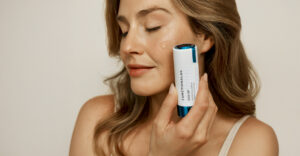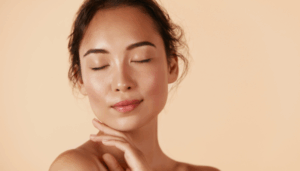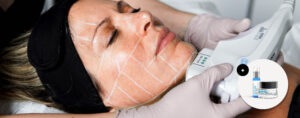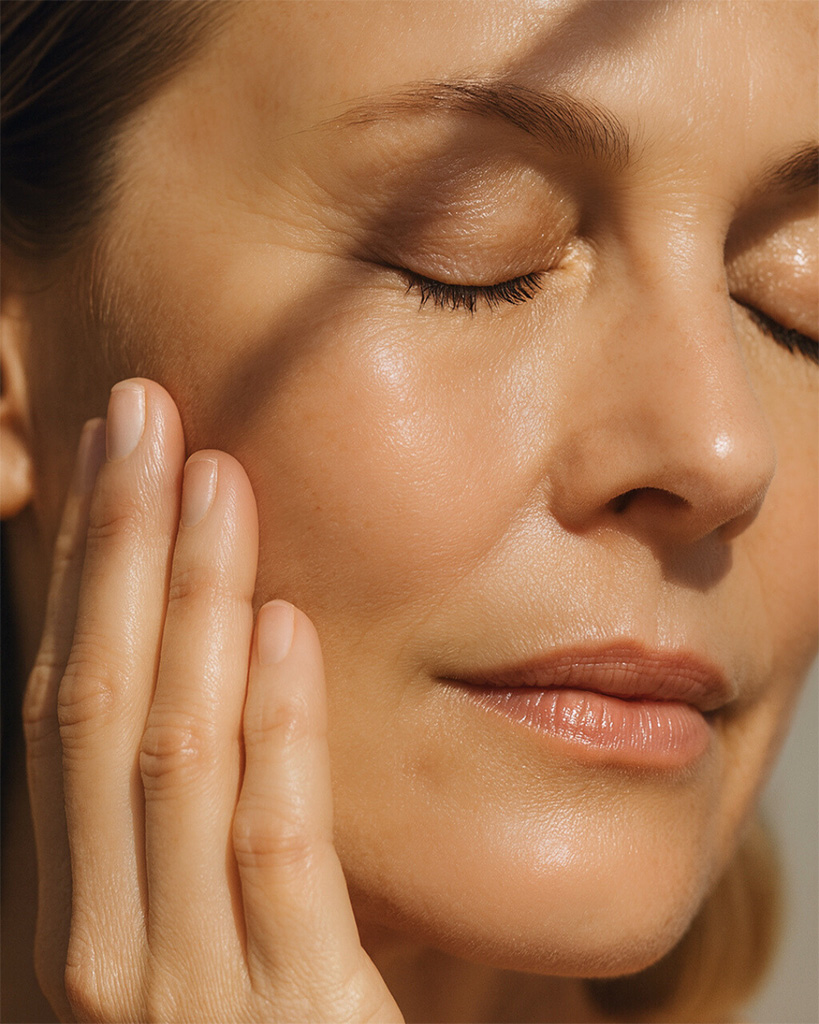Your Complete Guide
If your skin tends to break out more during the winter months, you’re not imagining it, and you’re definitely not alone. Many patients who enjoy clearer skin in the summer find themselves dealing with more congestion, inflammation, or painful breakouts as the weather turns cold. It can feel frustrating and even confusing when your usual skincare routine suddenly stops working.
But there’s a reason your skin is reacting this way.
Winter brings a perfect storm of factors that can disrupt your skin’s balance: dry air, harsh winds, reduced sun exposure, and increased stress. These seasonal changes can weaken your skin barrier, trigger inflammation, and lead to excess oil production—all of which create the ideal environment for acne to flare up.
The good news? Understanding why this happens is the first step toward regaining control.
In this guide, we’ll walk you through what makes acne worse in the colder months, what you can do at home to protect your skin, and which professional treatments are available if your breakouts need a little more support.
Because clearer skin—even in winter—is possible.
What’s Really Going On: Why Acne Gets Worse in Winter
Acne flare-ups during the colder months are more than just a coincidence. Winter creates a series of environmental and lifestyle shifts that directly affect your skin’s ability to regulate itself. Here’s a breakdown of the most common culprits:
Your Skin Is Dry—And Producing More Oil
Cold outdoor air and indoor heating both rob your skin of its natural moisture. As your skin dries out, its barrier weakens, leaving it more vulnerable to bacteria, irritation, and inflammation.
In response, your skin shifts into protection mode by producing more sebum (oil). But that excess oil doesn’t help—it combines with dead skin cells and gets trapped in the pores. The result: congestion, blackheads, and inflamed breakouts.
This becomes a vicious cycle: dryness → more oil → clogged pores → more inflammation → a weaker barrier… and repeat.
Less Sunlight Means Less Vitamin D
Winter also means shorter days and less exposure to sunlight. Without enough UV light, your skin produces less vitamin D, a key nutrient that helps regulate inflammation and support your skin’s immune function.
Lower vitamin D levels are linked to increased acne flare-ups, and your skin may also become more sensitive, reactive, or slower to heal. Less natural light can even impact your skin’s microbiome, altering the balance of good bacteria that help protect against acne.
The Rebound Effect After Summer
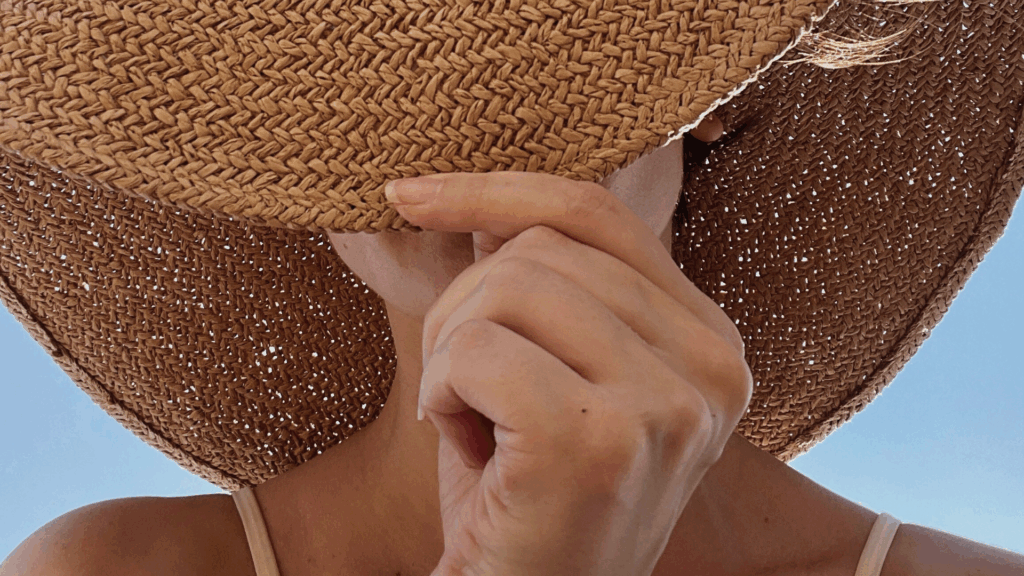
In the summer, UV rays can temporarily reduce inflammation and dry out active breakouts, giving the impression of clearer skin. But sun exposure also thickens the outermost layer of your skin, which traps oil and dead cells underneath.
When fall arrives and your skin starts shedding that thickened layer, all that congestion surfaces at once triggering a wave of new breakouts just as winter begins. This “rebound effect” is common and frustrating, but totally normal.
Holiday Habits and Lifestyle Stressors
Winter isn’t just hard on your skin, it’s hard on your routine. Holiday stress, less sleep, richer meals, more sugar, and increased alcohol intake can all trigger hormonal shifts that worsen acne.
Stress increases cortisol, which boosts oil production and slows healing. At the same time, heavy or high-glycemic foods (like sweets and dairy) may elevate hormones like insulin and DHT, which are linked to acne flare-ups. Combine that with inconsistent routines or skipped skincare, and your skin can quickly feel out of control.
What You Can Do: Small Changes, Big Impact
Before you turn to medical-grade treatments, it’s worth taking a close look at your daily skincare habits. In winter, small adjustments, done consistently, can help your skin regain balance, reduce inflammation, and prevent new breakouts.
Here are the key steps to support your skin during the colder months:
Gentle Cleansing: No Stripping, No Overdoing It
Cleansing is essential, but how you cleanse makes all the difference. In winter, your skin’s barrier is already compromised, so anything too harsh or drying can make acne worse.
Use a soap-free, pH-balanced cleanser formulated for sensitive or acne-prone skin. Wash your face no more than twice a day, ideally morning and night, using lukewarm water. Avoid rough washcloths, scrubbing motions, or foaming cleansers with sulfates, which can strip your skin of essential oils.
Your goal: remove excess oil and impurities without damaging your skin’s natural defenses.
Moisturize Intelligently: Light, But Effective Hydration
Yes, even oily skin needs a moisturizer, especially in winter. When skin lacks hydration, it produces more oil to compensate, which can lead to clogged pores and new breakouts.
Choose a non-comedogenic, fragrance-free moisturizer with barrier-repairing ingredients like hyaluronic acid, niacinamide, ceramides, or glycerin. If your usual formula feels too light for the season, try switching to a slightly richer texture without going greasy.
Apply moisturizer immediately after cleansing, while your skin is still slightly damp, to lock in hydration and strengthen the skin barrier.
Watch Your Products: Too Harsh Can Hurt
Many over-the-counter acne products, especially those designed for oily or teen skin, can be far too aggressive in winter. Ingredients like high-percentage alcohols, strong exfoliants, and drying clays may strip your skin and cause more harm than good.
Instead, focus on balance and support.
- If you use active ingredients (like salicylic acid, benzoyl peroxide, or retinoids), reduce the frequency or layer them with a hydrating serum.
- Avoid combining multiple exfoliants, which can cause irritation and lead to more inflammation.
- Pay attention to how your skin reacts—tightness, stinging, or flaking are signs it’s time to adjust.
Remember: less is often more. A minimal, targeted routine will often do more for winter acne than layering too many harsh products.
Protect Your Skin from the Outside World
Start by reducing the external stress: choose soft, breathable fabrics that don’t rub or trap moisture, especially around the jawline, neck and cheeks. Be gentle when drying your skin, and avoid heat extremes, which only add to the irritation.
But protection goes beyond what you wear. Adding a vitamin C serum to your routine gives your skin internal support. This powerful antioxidant helps calm inflammation, strengthen the skin’s natural defenses, and fade post-acne marks—without clogging pores or causing sensitivity when well-formulated.
In winter, your skin needs both: a physical shield against the elements, and antioxidant support to stay calm and clear from within.
Keep Up Your SPF—Even If It’s Snowing
It’s a common misconception that sunscreen is only necessary in the summer. But UV rays don’t disappear in winter, they simply become less obvious. In fact, snow can reflect up to 80% of UV radiation, meaning your skin is still exposed even on cloudy days.
For acne-prone skin, this matters. UV exposure can worsen inflammation, trigger post-acne pigmentation, and weaken an already sensitive skin barrier. If you’re using actives like retinoids or acids, your skin is also more vulnerable to sun damage, even in colder seasons.
Opt for a lightweight, non-comedogenic SPF of at least 30, ideally built into your moisturizer. Daily protection supports overall skin health and helps prevent pigmentation from lingering after breakouts.
Take Warm (Not Hot) Showers
As tempting as a steamy shower may be in winter, hot water can dry out your skin and disrupt its protective barrier, especially if you’re already using acne treatments that sensitize the skin.
High temperatures strip away natural oils, leading to tightness, flaking, and compensatory oil production. That’s a recipe for clogged pores and irritation.
To keep your skin balanced:
- Use lukewarm water when washing your face and body
- Keep showers short and avoid letting hot water hit your face directly
- Pat dry with a clean, soft towel and moisturize immediately after
This small habit helps preserve hydration and reduces unnecessary inflammation, two key factors in controlling winter acne.
Nourish from Within: Food, Water, and Supplements
In winter, it’s easy to reach for comfort foods and forget to hydrate, but your skin notices. A diet high in sugar, dairy, or processed foods can trigger inflammation and hormonal fluctuations that lead to breakouts. Drinking less water and skipping nutrient-rich meals also weakens the skin’s ability to heal.
Aim for balanced, whole foods, drink water regularly, and consider a vitamin D supplement if you get little sun. Supporting your skin from the inside is just as important as what you apply on the surface.
Stress Less, Sleep More: Your Skin Will Thank You
Cold-weather stress, disrupted routines, and lack of daylight can all raise cortisol levels and worsen acne. Poor sleep slows skin repair and makes breakouts linger longer.
Even simple habits—consistent sleep, deep breathing, or stepping outside during daylight—can make a difference. When your body is calm and rested, your skin reflects it.
Still Struggling? We’re Here With Solutions That Work
If your breakouts persist despite careful skincare and lifestyle changes, you’re not doing anything wrong, your skin may simply need more targeted support. At Dermapure, we offer advanced treatments tailored to your skin’s unique condition, especially during the winter months when sensitivity and inflammation are at their peak.
Our team of medical professionals will assess your skin in depth and recommend a personalized plan based on your acne type, skin barrier health, and seasonal challenges.
Here are some of the safe, effective options we may include in your treatment journey:
Pulsed Light Therapy
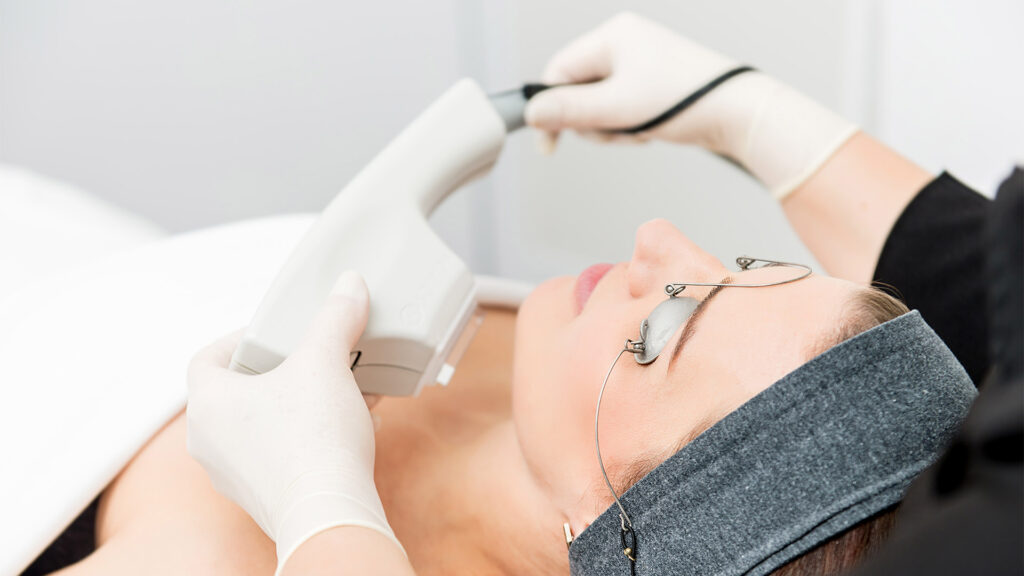
Pulsed light therapy is a safe, non-invasive treatment that uses precise wavelengths of light to target several key acne triggers—without harming the surrounding skin. It works by destroying acne-causing bacteria (Cutibacterium acnes), calming inflammation, and regulating overactive sebaceous glands that often produce excess oil in winter.
It’s an excellent option for patients dealing with:
- Inflammatory acne (papules, pustules)
- Oily or congested skin
- Breakouts that don’t fully respond to topical products
And winter? It’s the perfect time to start.
Unlike summer, when UV exposure and heat can limit laser and light-based treatments, winter provides the ideal conditions: less sun exposure, lower risk of hyperpigmentation, and more consistent skin hydration with proper care. Your skin is more stable, and healing is more predictable—making light therapy safer and more effective this time of year.
A series of sessions is usually recommended for best results, and treatments can be combined with barrier-repair skincare to enhance efficacy while protecting sensitive winter skin.
If you’re looking for a clean, efficient way to treat acne at its source this season, pulsed light therapy is one of the most trusted options available.
Photodynamic Therapy
If you’ve been treating your acne consistently but still feel stuck—dealing with painful breakouts, inflammation, and skin that just won’t settle—Photodynamic Therapy (PDT) may offer the breakthrough your skin needs.
This medically supervised treatment combines a photosensitizing solution with a controlled dose of blue light therapy. Together, they penetrate deeper than topical products can, targeting C. acnes bacteria, shrinking overactive sebaceous glands, and calming the inflammation from within.
Glycolic Peels: Reset Dull, Congested Winter Skin
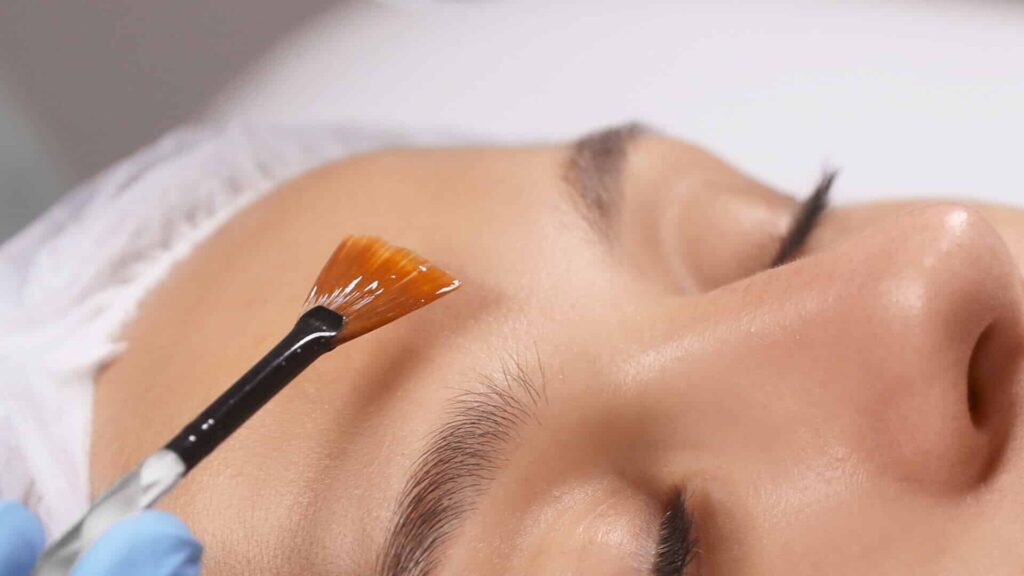
Winter can leave your skin feeling heavy, congested, rough, and lacking its usual glow. Glycolic peels offer a way to gently lift that weight. By dissolving the buildup of dead cells on the surface, these treatments reveal fresher, smoother skin underneath. The result is a visibly brighter complexion, more even tone, and fewer breakouts. Especially when your skin feels stuck or unresponsive, a glycolic peel can restore clarity and help your products work more effectively again.
Microdermabrasion Reinvented: Deep Clean Meets Deep Care
What used to be a simple exfoliation step is now part of something much more complete. In treatments like Hydrafacial or BELA MD, microdermabrasion becomes the first step in a multi-action approach that purifies, nourishes, and rebalances the skin in one visit. You’ll feel the immediate smoothness, but also notice deeper hydration and a clearer glow over time. In winter, when your skin feels off-balance or tired, this type of facial is a fast, comfortable reset—with no downtime and long-lasting benefits.

